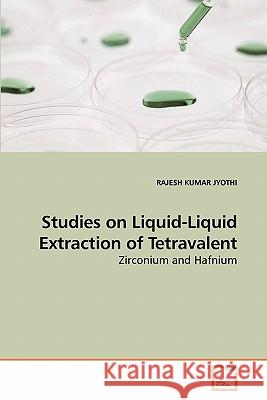Studies on Liquid-Liquid Extraction of Tetravalent » książka
Studies on Liquid-Liquid Extraction of Tetravalent
ISBN-13: 9783639246353 / Angielski / Miękka / 2010 / 184 str.
Liquid-liquid extraction (LLE) is a technique to cover the wide variety of the science and technology research areas due to its importance as well as key role to produce the pure metals without waste generation. Research and development trends in the new millennium begin the search for new routes to establish for rare and precious metals extraction and separation with their associated elements from natural resources as well as spent matrices. Developed and developing countries mainly depend on the rare metals recycling and reuse based on their uses in electronic and other materials manufacturing at the same time their resources are very limited at all over the globe. Zirconium and hafnium metals are basically finds application in the nuclear power program due to the combination of variety of properties. It is well reported that the extractive separation of pair of metals such as zirconium and hafnium is very difficult due to their similar chemical properties. LLE behavior of these metal ions with commercially available extractants such as organophosphorus, thioorganophosphorus, oximes and synthetic complexing reagents like isoxazolones an interesting class of β-diketones is worth exploring, they could be successfully, employed for the LLE studies of tetravalent zirconium and hafnium.
Liquid-liquid extraction (LLE) is a technique to cover the wide variety of the science and technology research areas due to its importance as well as key role to produce the pure metals without waste generation. Research and development trends in the new millennium begin the search for new routes to establish for rare and precious metals extraction and separation with their associated elements from natural resources as well as spent matrices. Developed and developing countries mainly depend on the rare metals recycling and reuse based on their uses in electronic and other materials manufacturing at the same time their resources are very limited at all over the globe. Zirconium and hafnium metals are basically finds application in the nuclear power program due to the combination of variety of properties. It is well reported that the extractive separation of pair of metals such as zirconium and hafnium is very difficult due to their similar chemical properties. LLE behavior of these metal ions with commercially available extractants such as organophosphorus, thioorganophosphorus, oximes and synthetic complexing reagents like isoxazolones an interesting class of β-diketones is worth exploring, they could be successfully, employed for the LLE studies of tetravalent zirconium and hafnium.











